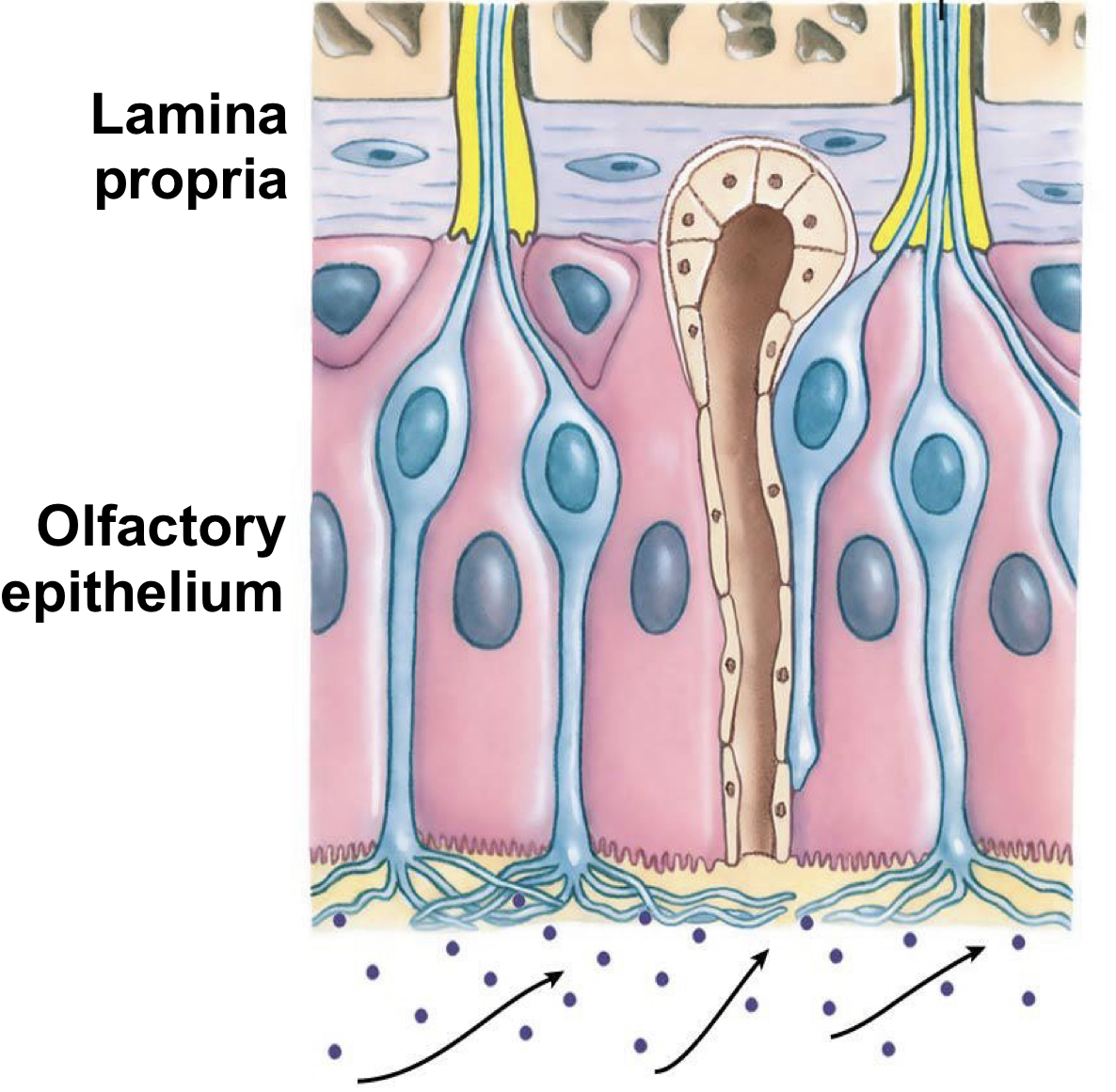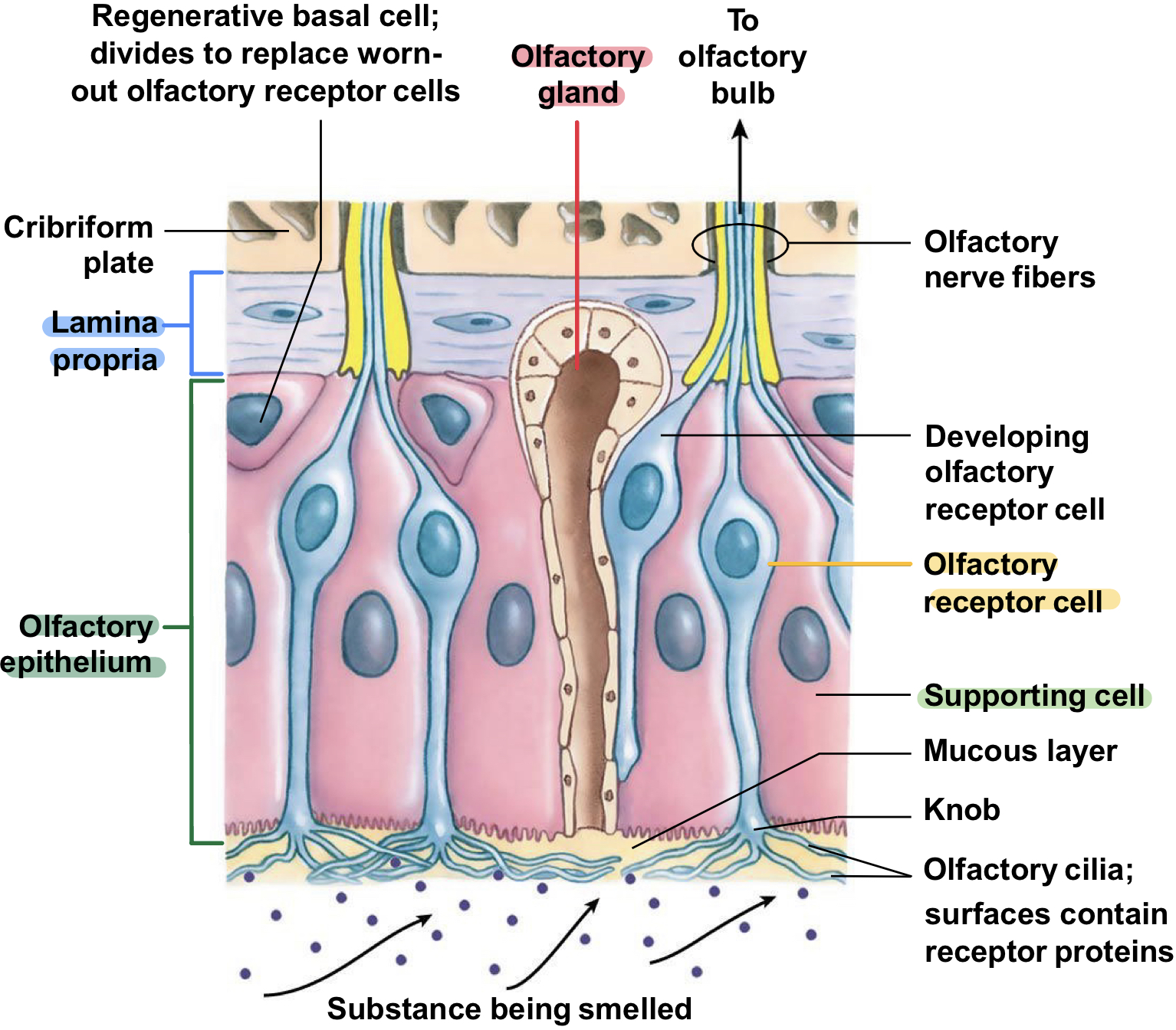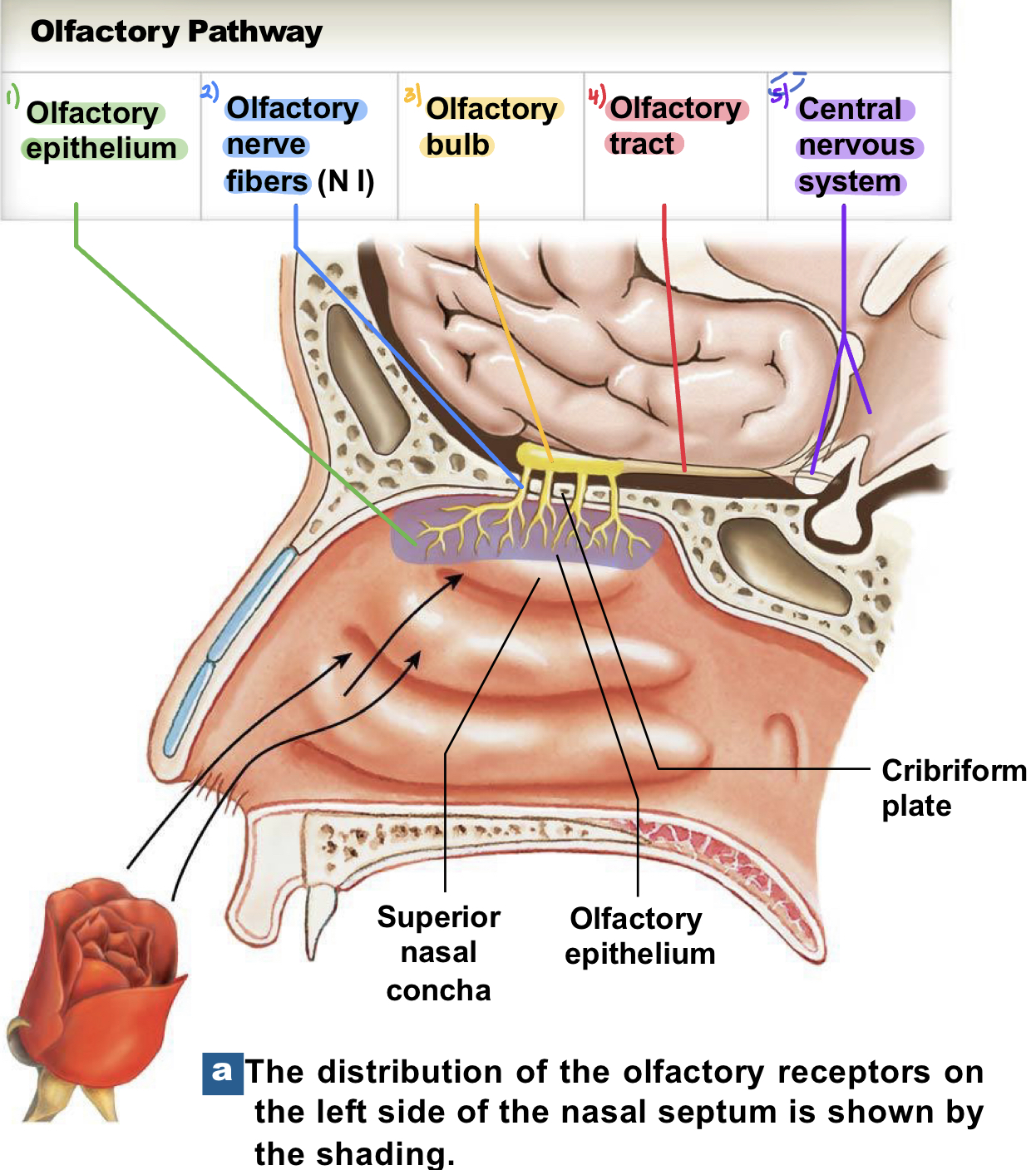Olfaction (smell)
1/10
There's no tags or description
Looks like no tags are added yet.
Name | Mastery | Learn | Test | Matching | Spaced |
|---|
No study sessions yet.
11 Terms
What are the 5 special senses?
Olfaction (smell)
Equilibrium (balance)
Hearing
Gustation (taste)
Vision
Olfactory organs are made up of 2 layers, what are they?
Olfactory epithelium
Has cilia where chemicals can bind
Lamina propria

What 4 things does the olfactory epithelium consist of?
Olfactory receptors
Supporting cells
Basal cells
Olfactory glands

Why do olfactory receptors have a short half life and what replaces it?
Why: Because it is prone to damage
Replaced by: Basal cells that differentiate into olfactory receptors

Why are older people less sensitive to smells?
Because basal cells "run out” and the ones that remain are less sensitive
What are olfactory receptors cells?
Highly modified neurons with chemical receptors called odorant binding proteins on the cilla
What are odorants?
Chemicals that bind to the ordorant binding proteins in olfactory receptors
Function of olfactory glands?
Secrete mucus
What is the olfactory pathway?
Olfactory epithelium
Axons leave the olfactory epithelium
Pass through the cribriform foramina
Olfactory nerve fibers
Synapse on neurons in the olfactory bulbs
Impulses travel to the brain via CN I
Olfactory bulb
Olfactory tract
Central nervous system
Arrive at the cerebral cortex, hypothalamus, and limbic system

How can we detect different smells?
Because epithelial receptors have different sensitivities
Olfactory Dysfunction
Associated with
Defintion
Types
Ansomia =
Hyposmia =
Dysosmia =
Associated with: Corona viruses and SARS-CoV-2
Defintion: Loss of sense of smell or taste
Types:
Ansomia = Inability to detect one or more smells
Hyposmia = Reduced ability to detect odor
Dysosmia = Altered perception of smell